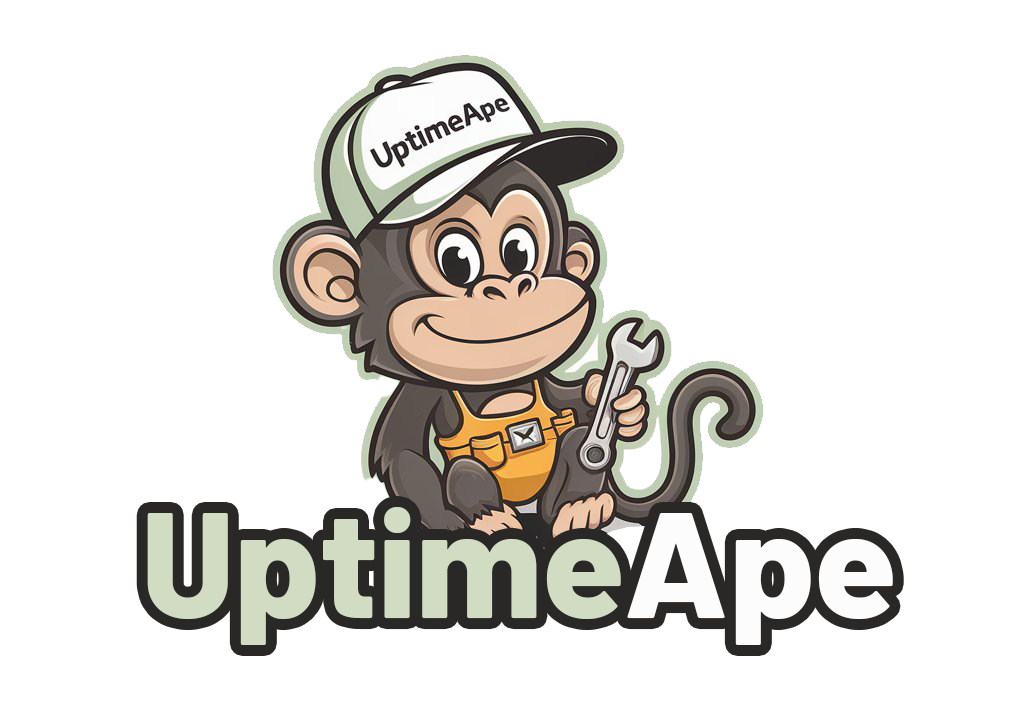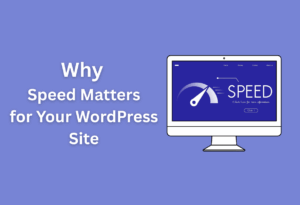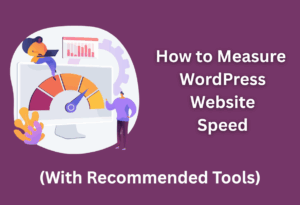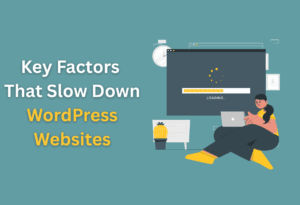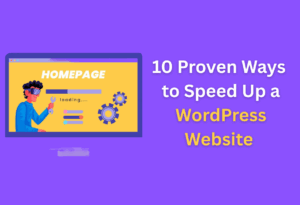Most website owners understand the importance of load speed for user experience, but many overlook a key performance metric: Largest Contentful Paint (LCP). This important measure gauges how quickly the largest visual element on your page loads, directly influencing your site’s perceived performance.
In this post, you will learn what LCP is, why it matters, and how you can optimize it to improve your website’s speed and overall user satisfaction. Let’s examine the details and equip you with the knowledge to enhance your site’s performance effectively.
Understanding Largest Contentful Paint (LCP)
Your understanding of Largest Contentful Paint (LCP) is vital to optimize your website’s performance. LCP measures the time it takes for the largest element in the viewport to become visible to users, typically involving images, videos, or blocks of text. Tracking LCP allows you to assess whether your website is delivering content effectively, helping you enhance user experience.
Definition of Largest Contentful Paint
To define Largest Contentful Paint, it is the time from when a user navigates to a page until the largest visible content element loads and is fully rendered. This metric gauges how quickly the most important content appears, providing insights into the loading performance of your site.
Importance of LCP in User Experience
Across the web, users expect fast-loading pages. LCP directly impacts your site’s usability, as a slower LCP can lead to frustration and abandonment. A site that meets optimal LCP standards allows for a smoother interaction, making users feel satisfied with their browsing experience.
It is important to note that when the LCP score improves, your site’s bounce rate often decreases. Users are more likely to stay engaged with content that loads quickly and efficiently. As a result, investing time in optimizing your LCP can significantly enhance overall user satisfaction, driving not only better engagement but also conversion rates.
LCP and Core Web Vitals
Largest Contentful Paint is one of the three core web vitals that Google suggests you prioritize for assessing your website performance. These metrics help you understand how well your site creates a positive experience for visitors while they interact with your content.
At the core of web performance, LCP gives a clear indication of how well your site performs in retaining user interest. Since Google considers LCP a vital component in ranking algorithms, paying close attention to its performance can lead to improved search visibility. By optimizing LCP alongside other web vitals, you enhance both the experience for users and the standing of your site in search results.
Factors Influencing LCP
If you’re looking to optimize your website’s performance, understanding the factors that influence Largest Contentful Paint (LCP) is vital. Several key elements can significantly impact LCP times, including:
- Server Response Times
- Render Blocking Resources
- Image and Video Loading Times
- CSS and JavaScript Efficiency
The focus on these factors can lead to faster load times and improved user experience.
Server Response Times
Response times from your server can greatly affect LCP. A slow server might delay the time it takes for your website to start rendering content in the browser. Optimizing your server’s performance and ensuring minimal downtime will help improve these response times.
Render Blocking Resources
Render blocking resources can severely hamper your website’s loading speed. They are elements like CSS files and JavaScript scripts that must be loaded before the browser can display the page. This delay can impede users from seeing content promptly.
Even minor delays from render blocking resources can lead to significant delays in LCP. To mitigate this, consider loading non-critical resources asynchronously or deferring their loading until after the main content is rendered. This will help ensure quicker loading of visible elements, improving user experience.
Image and Video Loading Times
Blocking issues with image and video loading times can also affect your website’s LCP. Heavy media files can slow down the overall rendering of a page, making it vital to optimize these resources.
For instance, using modern image formats and implementing responsive images can greatly enhance loading speeds without sacrificing quality. Additionally, loading videos efficiently, such as using lazy loading techniques, can keep your LCP times low while providing a rich media experience for users.
CSS and JavaScript Efficiency
One important aspect to consider is the efficiency of your CSS and JavaScript. Bulky files or excessive use of frameworks can lead to longer loading times, which can hurt your LCP metrics.
Considering efficient coding practices, such as minifying your CSS and JavaScript files and removing unused code, can lead to improved performance. Leveraging tools like code splitting or tree shaking can also assist in ensuring your resources load faster, positively influencing LCP.
Measuring LCP
Once again, measuring Largest Contentful Paint (LCP) is necessary for understanding user experience on your website. By focusing on how quickly the largest visible content element is rendered, you can better assess the loading performance of your site. Accurate measurements give you insights into your visitors’ experiences, paving the way for targeted optimizations that enhance site speed.
Tools for Measuring LCP
Behind the scenes, various tools can help you efficiently measure LCP. Google PageSpeed Insights, Lighthouse, and WebPageTest are excellent choices for pinpointing LCP performance. Each offers detailed reports, allowing you to identify elements that may be slowing down your page loading times, so you can take actionable steps to improve.
Interpreting LCP Scores
Across the digital landscape, understanding LCP scores is vital. A good benchmark is an LCP score of 2.5 seconds or less. This statistic indicates that users are likely experiencing a positive perception of your site’s loading speed.
Scores above this threshold can signal areas for improvement, nudging you to take the necessary actions to enhance user satisfaction.
Indeed, interpreting LCP scores involves more than just looking at numbers; it’s about gauging user experience. A score below 2.5 seconds means your content is likely loading quickly enough for users to engage effectively.
However, if your score exceeds this time, it may lead to increased bounce rates and decreased user engagement. Take time to analyze the scores in context with other metrics and user feedback to form a comprehensive view of site performance.
Comparison with Other Performance Metrics
Above all, comparing LCP with other performance metrics can provide you with a fuller picture of your site’s loading speed. Below is a table showing how LCP relates to other key metrics:
Performance Metrics Comparison
| Metric | Purpose |
|---|---|
| First Contentful Paint (FCP) | Measures the time taken for the first visible content to render. |
| Cumulative Layout Shift (CLS) | Measures the visual stability of your website during loading. |
| Time to First Byte (TTFB) | Measures server response times before any content is rendered. |
Measuring these metrics along with LCP is necessary for a well-rounded assessment of your site’s performance. The relationship between these metrics will illuminate performance bottlenecks, providing insights that help optimize your website. Keep these metrics in mind as you aim for an improved user experience and faster load times.
Optimizing LCP
Not all optimizations are created equal when it comes to improving your Largest Contentful Paint (LCP). It’s vital to focus on the right strategies to enhance your site speed and provide a better user experience.
Server-Side Optimizations
About server-side optimizations, implementing techniques such as utilizing a content delivery network (CDN), optimizing server response times, and enabling HTTP/2 can greatly benefit your site’s load time and performance. These actions will help ensure that users receive content as swiftly as possible.
Image Optimization Techniques
The way you handle images can significantly affect your LCP. Using modern formats like WebP, compressing images, and specifying dimensions in your HTML can enhance performance and visual loading speed.
Even small adjustments, such as using responsive images and relying on image CDNs that serve different sizes based on the user’s device, can lead to a quicker LCP. Make sure your images are not larger than necessary while still retaining quality for the best user experience.
Lazy Loading Strategies
Strategies like lazy loading are effective for optimizing LCP by ensuring that images and other heavy elements load only when they enter the viewport. This reduces the initial loading time, directly impacting the perceived performance of your site.
Another effective approach is implementing lazy loading for offscreen images and videos, ensuring that they load only as users scroll down the page. This not only improves LCP but also conserves bandwidth and enhances user engagement with your site.
Minimizing Render-Blocking Resources
Optimization involves reviewing and reducing render-blocking resources such as CSS and JavaScript that can delay rendering above-the-fold content. These resources can hinder your LCP, pushing it beyond acceptable limits.
With techniques like inlining critical CSS and deferring or asynchronously loading JavaScript, you can significantly decrease the amount of time it takes for your main content to appear. This leads to a more seamless experience for your users and positively impacts your LCP measurement.
LCP and SEO
Now that you understand the significance of Largest Contentful Paint, it’s important to explore its relationship with SEO and how it can affect your website’s visibility on search engines.
LCP’s Role in Google’s Ranking Algorithms
About a year ago, Google announced that page experience signals, including LCP, would be incorporated into its ranking algorithms. This means that a fast loading experience positively influences how your website ranks in search results, emphasizing the importance of providing users with optimal web performance to achieve higher visibility.
Correlation Between LCP and Bounce Rates
Correlation exists between LCP and bounce rates, which can impact your site’s overall performance. When your website takes too long to load and display significant content, users are more likely to leave, leading to a higher bounce rate.
Rates of user retention significantly decrease as LCP times increase. If visitors encounter delays when trying to access main content, they will not hesitate to navigate away from your site. This relationship highlights the importance of optimizing LCP, as reducing load times can foster better engagement and keep users on your page longer.
Long-term Benefits of Improving LCP
On the other hand, focusing on improving your LCP can lead to long-term advantages for your online presence. A better loading experience not only enhances user satisfaction but also positions your site favorably in search rankings.
Googles emphasis on user experience means that consistently optimizing LCP can build credibility and trust with your audience. Over time, this commitment to performance can result in increased organic traffic, improved conversion rates, and a strong online reputation, ultimately driving your business forward.
Case Studies
To illustrate the importance of Largest Contentful Paint (LCP) in enhancing site speed, we’ve compiled noteworthy case studies that highlight the variations in performance before and after strategic improvements. The following list showcases how different companies have successfully improved their LCP metrics:
- Company A: Reduced LCP from 3.2 seconds to 1.8 seconds by optimizing images and leveraging browser caching, leading to a 30% increase in user engagement.
- Company B: Streamlined CSS and JavaScript, improving LCP from 4 seconds to 2.5 seconds, resulting in a 25% reduction in bounce rate.
- Company C: Implemented a Content Delivery Network (CDN), decreasing LCP from 3.5 seconds to 1.9 seconds and boosting page views per session by 40%.
- Company D: Enhanced server response time, bringing down LCP from 5 seconds to 2.8 seconds, which led to a 50% increase in their conversion rate.
Successful LCP Improvements
Against the odds, many companies have demonstrated how dedicated efforts to improve their LCP can yield significant benefits. For instance, by optimizing image sizes and implementing effective caching strategies, these organizations have not only achieved faster load times but also enhanced user experience, resulting in higher engagement rates and improved overall site performance.
Common Pitfalls and Challenges
Studies indicate that even with the best intentions, some businesses encounter obstacles during their LCP optimization journey.
Often, teams may focus too heavily on superficial fixes without addressing underlying inefficiencies, leading to minimal improvements. Furthermore, neglecting to monitor real-time metrics can hinder the identification of persistent issues affecting LCP.
At times, companies may overlook important tools or analytics that provide insights into their LCP performance, resulting in misguided optimization efforts.
Additionally, not conducting proper testing across various devices could lead to discrepancies, leaving some users with a subpar experience. Addressing these challenges is key to reaching optimal LCP levels.
Real-World Metrics Before and After Adjustments
With a focus on metrics, you can better understand the tangible improvements brought about by adjustments in LCP. Analyzing data before and after optimizations reveals dramatic changes, where companies often experience faster load times and enhanced user interactions, demonstrating the value of a tailored strategy for LCP improvement.
This data-driven approach provides compelling evidence for refining your site performance. Engaging in ongoing assessments and applying the right solutions not only enhances LCP but can also translate into increased traffic, improved retention, and overall business growth. Prioritizing these metrics is important for sustained success in the digital landscape.
Conclusion
Conclusively, understanding Largest Contentful Paint (LCP) is necessary for optimizing your website’s performance. By focusing on this key metric, you can enhance user experience and improve site speed, leading to higher engagement and conversion rates.
Your site’s LCP will directly impact how visitors perceive its reliability and speed. By implementing best practices to improve LCP, you ultimately create a more favorable environment for your users, encouraging them to stay longer and interact more with your content. Prioritize LCP in your optimization efforts to boost your site’s overall performance.
